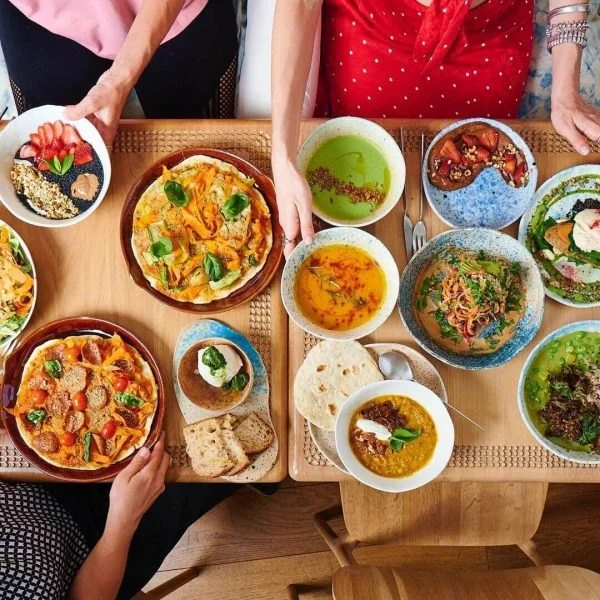
Exploring Vegan Restaurants That Introduce Unique Flavors From Around the World
- 1. Vegan Cuisine and Cultural Influences
- 2. How Global Flavors Are Transforming Vegan Menus
- 3. How Vegan Restaurants Are Innovating with Cultural Flavors
- 4. Examples of Vegan Restaurants Offering Unique Global Flavors
Vegan cuisine is no longer confined to simple salads or vegetable dishes. It has evolved into a diverse and dynamic culinary scene that draws inspiration from cultures around the world. Vegan restaurants are increasingly incorporating traditional flavors from various global cuisines, making it easier for plant-based eaters to experience rich, bold flavors without compromising their dietary preferences. From the spice of Indian curries to the umami of Japanese miso, vegan chefs are creating dishes that not only reflect the diversity of global cuisine but also highlight the versatility of plant-based ingredients. By incorporating these flavors, vegan restaurants are broadening their appeal and offering exciting dining experiences for vegans and non-vegans alike.
One of the most exciting aspects of vegan restaurants today is the integration of global flavors into their menus. Ingredients that were once considered niche in Western cuisine, like tamarind, miso, or coconut milk, are now staples in many vegan kitchens. Indian cuisine’s use of spices like turmeric, cumin, and coriander has inspired vegan dishes that are both comforting and flavorful. Meanwhile, Mexican flavors such as smoky chipotle, lime, and avocado offer fresh and zesty additions to plant-based meals. Mediterranean influences bring rich flavors like hummus, baba ganoush, and falafel, making for hearty vegan dishes that are satisfying and delicious. The beauty of this fusion is that vegan restaurants are blending traditional global recipes with modern twists, creating a new wave of flavors that appeal to a broader audience.
Vegan restaurants are pushing the boundaries of culinary innovation by adopting techniques and ingredients from different cultures. The fusion of flavors and techniques from various parts of the world allows chefs to create new, exciting dishes that surprise and delight the taste buds. For example, chefs are experimenting with fermentation methods like kimchi, kombucha, and tempeh to add complexity to plant-based dishes. Additionally, vegan restaurants are reimagining traditional dishes by substituting plant-based ingredients for meat, dairy, and eggs, offering new, creative ways to enjoy classic dishes. Whether it’s a vegan take on a Mexican taco, an Indian curry, or a Japanese sushi roll, these cultural influences bring authenticity and excitement to vegan cuisine, allowing restaurants to stand out in a competitive market.
Several vegan restaurants are leading the way in bringing global flavors to plant-based menus. Avant Garden in New York City offers a menu that combines European and Mediterranean influences, with dishes like artichoke and olive tapenade and roasted cauliflower with tahini. Dirt Candy, also in New York, is known for its innovative approach to vegetables, incorporating flavors from Korean, Japanese, and Mexican cuisines into dishes like kimchi pancakes and Mexican street corn. In Los Angeles, Gracias Madre serves vegan Mexican cuisine, using plant-based ingredients to create traditional dishes like jackfruit carnitas and cashew-based nacho cheese. These examples highlight how vegan restaurants are using flavors from around the world to create exciting, unique dishes that redefine plant-based dining.







 IHOP3.0 (470 reviews)
IHOP3.0 (470 reviews) Al Chile4.0 (87 reviews)
Al Chile4.0 (87 reviews) Vive La Crepe4.0 (28 reviews)
Vive La Crepe4.0 (28 reviews) International Cafe & BBQ4.0 (276 reviews)
International Cafe & BBQ4.0 (276 reviews) Supreme pizza NY3.0 (23 reviews)
Supreme pizza NY3.0 (23 reviews) Munch Heimish4.0 (241 reviews)
Munch Heimish4.0 (241 reviews) Best Sushi Restaurants for Every Budget and Taste: A Complete Guide
Best Sushi Restaurants for Every Budget and Taste: A Complete Guide The Appeal of French Restaurants for Special Occasions
The Appeal of French Restaurants for Special Occasions Exploring Vegan Restaurants That Focus on International Flavors
Exploring Vegan Restaurants That Focus on International Flavors How Pizza Restaurants Are Attracting Customers With Limited Edition Offerings
How Pizza Restaurants Are Attracting Customers With Limited Edition Offerings How Wine Bars Are Organizing Pairing Nights for Enthusiasts
How Wine Bars Are Organizing Pairing Nights for Enthusiasts How Juice Shops Are Integrating Superfoods Into Daily Menus
How Juice Shops Are Integrating Superfoods Into Daily Menus